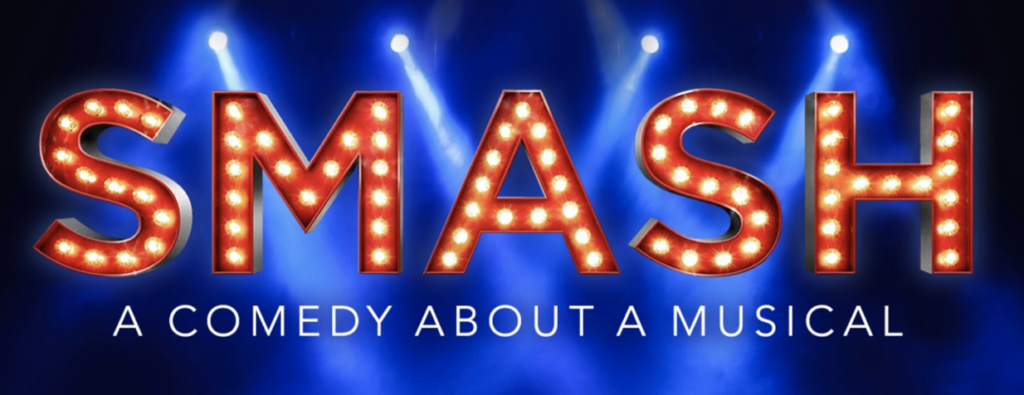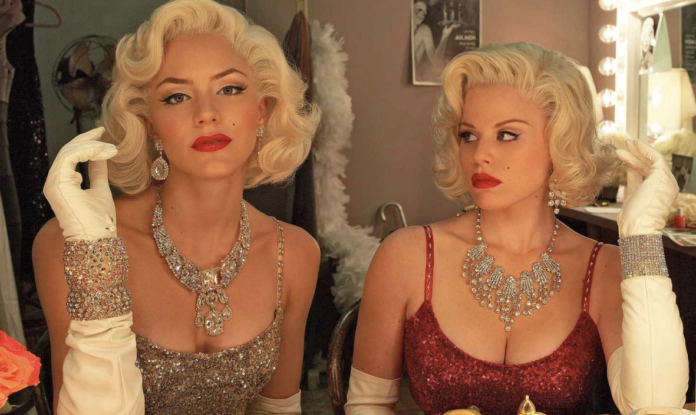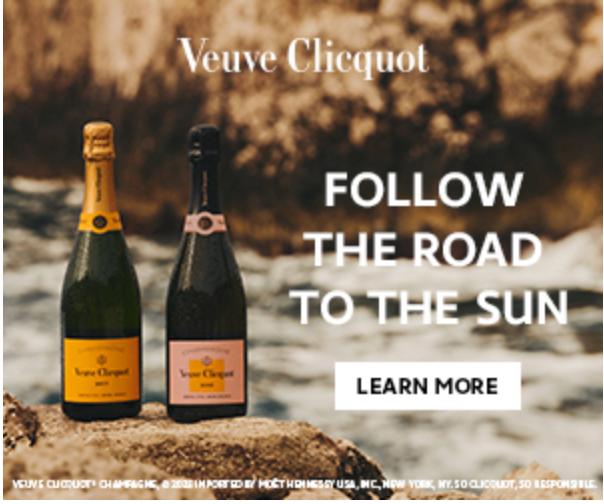SMASH Heads to Broadway in the 2024-2025 Season, directed by Susan Stroman, Produced by Steven Spielberg
SMASH is setting its sights on Broadway with an award-winning creative team, it was announced today by Robert Greenblatt, Neil Meron, and Steven Spielberg who will serve as lead producers. The stage musical adaptation, inspired by the fan-favorite NBC series on which they all worked together, is slated for Broadway in the 2024-25 season.

The production will be helmed by 5-time Tony-winning director Susan Stroman, with a score by the Tony- and Grammy-winning duo Marc Shaiman and Scott Wittman (Some Like It Hot, Hairspray, Mary Poppins Returns, etc.), who wrote over two dozen songs for the television show, many of which will be used in the musical.
They will also be writing additional new material. The book will be co-written by two of Broadway’s most seasoned craftsmen, Tony-winner Bob Martin (The Prom, The Drowsy Chaperone) and Tony-nominated Rick Elice (Jersey Boys, Peter and the Starcatcher). And Smash’s Emmy-winning choreographer, Joshua Bergasse, will reprise his role for the stage adaptation. 101 Productions, Ltd. will serve as General Management.
Steven Spielberg, whose original idea led to the NBC series, commented: “Smash is near and dear to my heart, and it was always my hope that a musical inspired by the show would eventually come to the stage. We now have an incredible creative team, and I’m looking forward to completing theSmash journey which began with my producing partners over ten years ago.”
Robert Greenblatt added, “Speaking for myself and Neil Meron, we’re elated that Steven wanted to join us as we bring Smash to the stage, as we’ve always felt that Shaiman and Wittman’s incredible score belonged on Broadway. And collaborating with the incomparable Susan Stroman, one of the best directors of musicals, plus first-class bookwriters, Rick Elice and Bob Martin, and our original choreographer, Josh Bergasse, is pure joy.”
Neil Meron commented, “Ever since the show ended in 2012, not a week goes by that someone doesn’t ask us when will they see Smash as a musical. We think we’ve come up with something the die-hard series fans will love but that will also be exciting for people who never saw an episode of the show. And above all else it will be a valentine to the Broadway musical and the exhilarating rollercoaster ride of bringing one to life.”
Many of the songs Shaiman and Wittman wrote for the television show —including the Emmy-nominated “Let Me Be Your Star” — will be used in the new musical. And while the story will follow the harrowing and hilarious process of mounting “Bombshell” (the musical about the life of Marilyn Monroe), the stage version of Smash will also depart liberally from the series.
The critically-acclaimed Smash debuted on NBC in February 2012 to raves from The Los Angeles Times (“A triumph”), The San Francisco Chronicle (“It’s so good you can’t help wondering why no one thought of it before”), The Hollywood Reporter (“Excellent, a bar-raiser for broadcast networks and superior to Glee”), and The Huffington Post (“One of the strongest new shows of the season”), among many others.
Smash was groundbreaking in its ambitiousness and developed a devoted following, but its popularity has only grown in the following years. The cast performed a charity benefit concert of the songs from “Bombshell” at the Minskoff Theatre in June of 2015 which sold out in fifteen minutes. It was filmed and eventually streamed during the early days of the pandemic in 2019 as a benefit for The Actor’s Fund (Entertainment Community Fund).
Susan Stroman’s work on Broadway is voluminous, including one of the biggest hits of all time, Mel Brooks’ The Producers, for which she won Tony Awards for both direction and choreography. Her other achievements include Tony Awards for choreography for Crazy For You, Show Boat, and Contact. She is represented this year in the West End by the well-received revival of Crazy For You, and on Broadway with New York, New York that has a score by the immortal team of John Kander and Fred Ebb, and Lin-Manuel Miranda.
Neil Meron has collaborated previously with Shaiman and Wittman, first on the motion picture of the musical Hairspray starring John Travolta, and then on the NBC live adaptation starring Harvey Fierstein. Meron is one of the lead producers (with Greenblatt as Co-Producer) of the current Shaiman and Wittman Broadway musical, Some Like It Hot, which opened to raves in December of 2022 at the Shubert Theatre.
The celebrated songwriters previously adapted another Steven Spielberg property for Broadway, the musical Catch Me If You Can, which was based on his 2002 hit film starring Leonardo DiCaprio and Tom Hanks. They also collaborated on the score for the box office hit, Mary Poppins Returns; and Shaiman is an Emmy-winner and seven-time Oscar nominee for his scores for motion pictures.
Rick Elice is co-writer of the mega–hit Jersey Boys, as well as The Addams Family, The Cher Show, and Peter and the Starcatcher. Bob Martin began his Broadway career both starring in and writing the book (Tony Award) for The Drowsy Chaperone. He co-wrote the book to the musical The Prom and co-created the television series Slings and Arrows. Martin and Elice are currently adapting The Princess Bride for the stage; Martin is also writing the book for the upcoming Broadway-bound musical, Boop; and Elice is writing the new musical, Water For Elephants.
Since Smash, Joshua Bergasse has become an acclaimed choreographer on Broadway where he was Tony-nominated for his elaborate ballets in the recent revival of On The Town. He collaborated with Shaiman and Wittman as choreographer for their musical adaptation of Charlie and the Chocolate Factory, and he also choreographed the revival of Lerner & Lowe’s Gigi starring Vanessa Hudgins.
Steven Spielberg is the most successful director in film history and the recipient of every major award including four Oscars, three Emmys, numerous Golden Globes and the AFI Lifetime Achievement Award, to name just a few. His list of producing credits for film and television through his two companies — DreamWorks and Amblin’ — is in a class by itself. He is also active on Broadway. His multi-faceted philanthropic work includes the creation of the USC Shoah Foundation in 1994.
Over the past thirty years, Robert Greenblatt ran Fox Broadcasting, Showtime, NBC, HBO, and the Turner Networks, and oversaw the launch of HBO Max in 2020. Between executive stints, he became an award-winning producer on Broadway (three Tony Awards, two Oliviers) and on television, where he won Golden Globe and Peabody Awards for HBO’s Six Feet Under. He produced Annie Live! with Neil Meron in 2021 and is currently executive producer of Julian Fellowes’ The Gilded Age on HBO.
Neil Meron is a busy producer on Broadway (Some Like It Hot, How To Succeed in Business Without Really Trying, Promises, Promises) and in film and television. He produced (with the late Craig Zadan) the Best-Picture, Chicago, the film version of Hairspray, The Bucket List, Bette Midler’s star turn in Gypsy for CBS, numerous television movies, and six live television musicals: The Sound of Music Live!, Peter Pan Live!, The Wiz Live!, Hairspray Live!, Annie Live!, and Jesus Christ Superstar Live in Concert!, for which he was awarded the Emmy.
The musical adaptation will be based in part on the television series created by Theresa Rebeck which was produced by Universal Television. Executive producers included Rebeck, Steven Spielberg, Neil Meron and Craig Zadan, Marc Shaiman, Scott Wittman, Darryl Frank, Justin Falvey, David Marshall Grant, and Joshua Safran. It was produced in association with DreamWorks Television and Storyline Productions.



